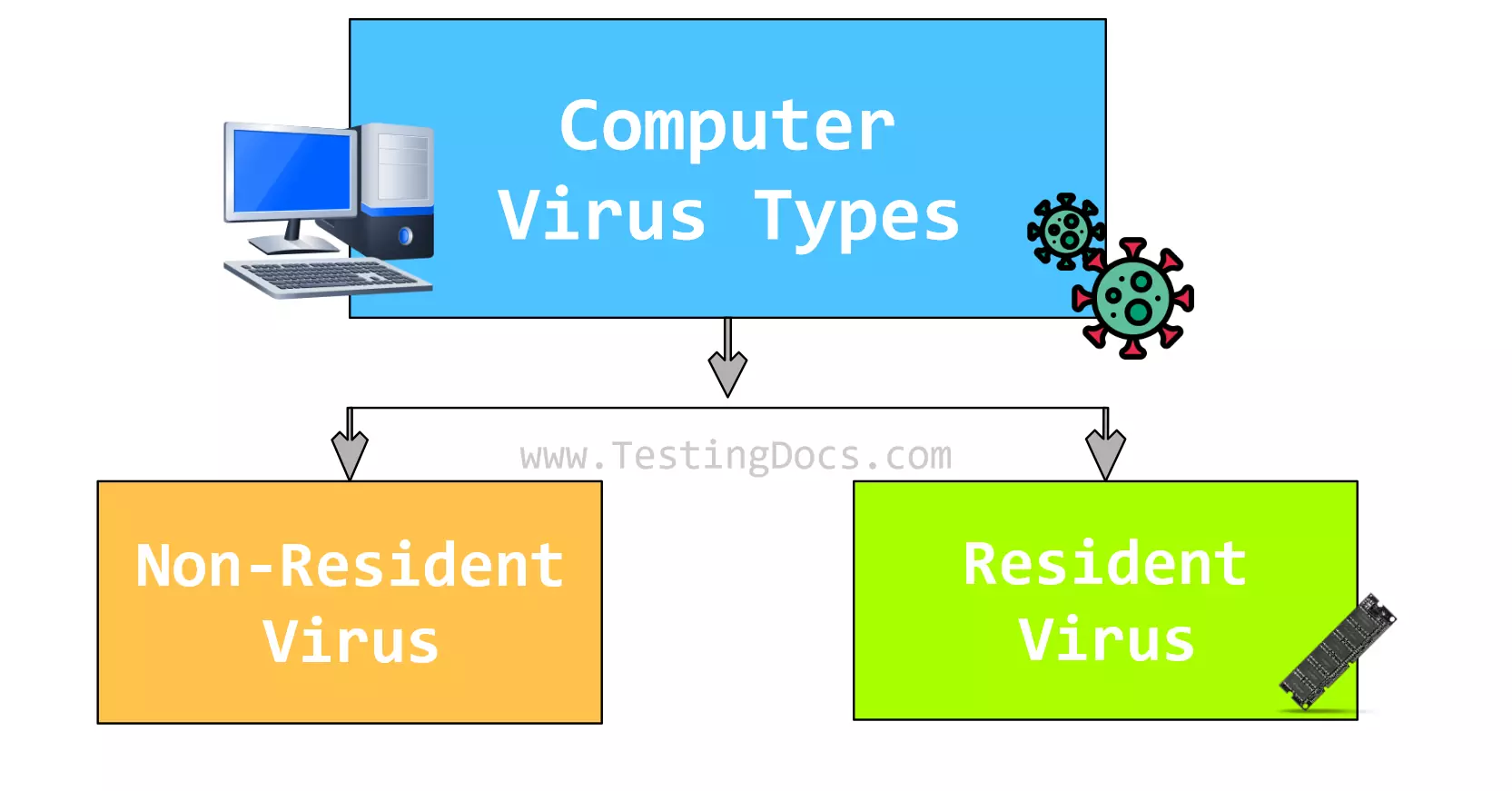Computer Virus Types
Overview
Let’s learn about common computer virus types in this tutorial. A virus is a type of Malware. Malware is a short form of malicious software.
Computer Virus Types
Viruses can be divided into two types based on their behavior when they are executed.
- Non-resident Viruses
- Resident Viruses

Non-resident virus
Non-resident viruses immediately search for hosts that can be infected, infect those targets, and transfers control to the application they infected. A host program is a program to which the virus may attach itself.
Resident Virus
A resident virus loads itself into the memory of a computer and can infect any file or program that is executed. The resident virus does not search for hosts but loads into the memory on execution and transfers control to the host program.
The virus stays active in the background and infects new hosts when those files are accessed by other programs or the operating system itself. It can interfere with system operations and evade detection by antivirus software.
Common types of viruses
In general, we can classify viruses by their characteristics and the mode of spread, replication, etc.
Polymorphic Virus
The polymorphic virus changes its code every time it replicates, making it difficult to identify and remove. It can use encryption or other techniques to avoid detection by popular antivirus software.
Boot Sector Virus
Boot Sector virus infects the master boot sector record of a computer and prevents it from booting up. It can spread through removable external media such as USB pen drives, external hard disks, and DVDs/CDs.
Overwrite Virus
Overwrite virus is a type of virus that overwrites the data of the files or programs it infects, making them useless. The only way to remove this kind of virus is to delete the infected files and restore them from a backup.
E-mail virus
An e-mail virus spreads as an attachment to e-mail messages and usually replicates itself by automatically mailing itself to dozens of people in the victim’s address book or contact list. Some e-mail viruses don’t even require a double click to be launched- they launch only by viewing the infected message in the preview pane of e-mail software. These viruses are hard to detect, and the only way to check these viruses is to avoid clicking on mail from unknown senders, or distrusted spam emails.
Stealth Virus
Stealth Virus is a virus that hides its presence from the user and antivirus software. A stealth virus is a virus that hides modifications it has made in files or boot sectors. Detecting and removing stealth viruses may require specialized tools and techniques.
Macro virus
A macro virus is a virus that is written in a macro language, a language that is built into a software application such as a word processor. Applications like Microsoft Office allow macro programs to be embedded in documents, so that the programs may be run automatically when the document is opened.
Multipartite Virus
A multipartite virus can infect both the boot sector and the executable files of a computer. It can spread quickly and cause severe damage to the computer system.
Script Viruses
Script viruses run on systems that have script interpreters. Script virus is a virus that is written in scripting languages like Visual Basic, JavaScript, etc. Scripter viruses are generally embedded in email messages, office automation documents, on web pages, etc.
See Also







